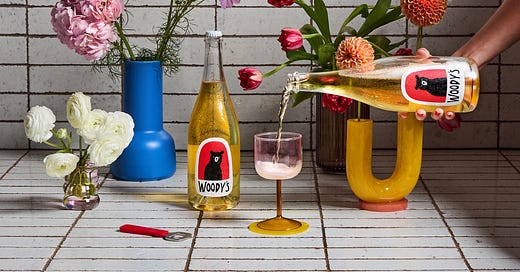There was a time when I couldn’t come up with a non-alcoholic wine to recommend to anyone who doesn’t drink or isn’t drinking right now. I’ve had a much better batting rate with certain brands of NA beer; I love an NA aperitif mixed with tonic.
And it’s still true that a lot of NA wines on the market are thin and sour or simply odd-tasting; making something without alcohol that tastes like good wine is a hard trick to pull off.
But I’m somewhat optimistic about the category getting better over time, especially because of how tasty Leitz’s NA riesling is. (I’ve also enjoyed Kolonne Null’s sparkling rosé.) So I did a bit of tasting recently to see if I’d missed any winners. And while I can’t say that alcohol-removed wine right now offers the profundity that many wine connoisseurs look for in the bottles they collect, I was pleased to find a few more good-tasting options—all especially useful for making NA or low-proof sparkling cocktails for a dinner party.
I tried two options from California-based Woody’s, and these effervescent bottlings do offer the rounded body and richness that you’re used to in wines with their alcohol intact. There’s a touch of added sweetness in the mix; I found it hardly noticeable in the apple-y blanc de blanc, but a bit more perceptible in the sparkling rosé. That said, the rosé also had a bit more complexity of flavor; it’s peachy with a bit of grapefruit edge, ready for serving with shrimp scampi or grilled fish or a big Caprese salad when we get to summer. I think you’ll love both of these most when mixing with an NA aperitif or fresh fruit juices for a cocktail. One warning: the bottles I tried, while cute enough in design to fit in with the current party-wine aesthetic, were so fizzy they overflowed a bit. Handle with care, and maybe open in the sink.
Wölffer Estate’s Spring in a Bottle is another you see around; these NA wines are produced in Germany in partnership with the Long Island winery. The rosé (made with mostly pinot noir, plus St. Laurent and a field blend of other grapes) is fruity and rounded, with a prickle of bubbles. The blanc de blanc, made with Spanish airén grapes, is fragrant and a little floral, hinting at pineapple—could be good with spicy food. Both wines are softly sweet, with residual sugar around that of demi-sec Champagne. In a dream world where I’m relaxing by a pool somewhere with a nice assortment of snacks, these could fit in just fine. (Though I wish they made a slightly drier version too.)
Lyre’s Classico doesn’t say “wine” anywhere on the can—it’s carbonated water with non-alcoholic fermented grape juice concentrate and non-fermented grape juice concentrate, citric acid, and a few other things. It tastes somewhere between prosecco and grape soda: fizzy, tart, sweet, and light on the palate. I’m not certain I need it in my life, but you might. Their terrifyingly orange Amalfi Spritz, though, I could see myself reaching for. It’s a convincing, vanilla-scented Aperol spritz substitute in a can; perhaps just a touch oversweet in the same way that many renditions of the original are. Nothing a little splash of seltzer can’t fix.
This newsletter contains a few affiliate links; I may receive a small commission for purchases made through these links. An even better way to support this newsletter: Follow my podcast, The Dinner Plan, and subscribe to the free recipe newsletter too.






Thanks for this! I took 2024 off from alcohol, and the streak is still alive in 2025. Not sure how widely available it is, but I had a shockingly good NA white from Fabelhaft at Lost Letter here in RVA.
Fritz Mueller’s sparkling na wine is very nice. Tried it a my local French bistro & always have it in my fridge now. Was nice to toast with on NYE as I was the designated driver https://fritzmueller.fm/en/wines/fritz-mueller-non-alcoholic/